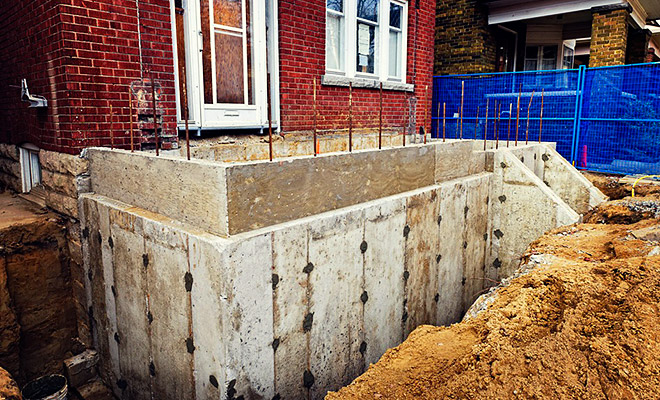Waterproofing is an essential part of building your home and not something you want to mess around with. The first thing you need to understand is exactly what foundation waterproofing is, and how it’s going to impact the rest of your home life. When you dig into the ground to build the foundation for your dream home, afterward water often ends up collecting alongside it and forming pools. These pools can then force water through cracks and joints in the foundation walls. Then you get the fun and games of spring flooding and other expensive problems!
There are four major types of waterproofing used to protect Toronto home foundations:
Waterproof Membranes
Waterproof membranes stop water from being absorbed through the walls and into your home. It isn’t a big white plastic sheet wrapped around your basement walls like something in a sci-fi show, though. It’s simply a spray product that is usually applied to the exterior walls.
Foundation waterproofing membranes are required to meet three main criteria. They have to:
- Span a crack in a foundation
- Withstand water under hydrostatic pressure
- Stop water vapor from entering a basement
The best thing about the membrane is that it is low in cost to purchase the materials and install it. It’s also been proven to work, is environmentally friendly and highly effective in stopping water leaks in basements.

Foundation Drains
Most of the problems that people encounter with water are located between the joint of the basement walls and the floor. The pools that build up around the foundation create hydrostatic pressure, forcing water through the cracks and joints. The best way to avoid this pooling together is through drains.
Drain pipes, usually made from a stiff PVC pipe, are placed on the bottom half of their cross-section to allow water infiltration. It’s ideal if you do this while the home is being built because it’s a lot more difficult to get the necessary drains installed if your home is already constructed without them. Once the backfill has been completed, the installation process becomes highly expenses and very disruptive to your life.
Protection Board
These nifty things are used to add additional protection to the waterproofing membranes and prevent it from damage during construction. Usually, the protection board is made from a semi-flexible sheet made with an asphalt core between asphalt impregnated glass fiber mats.
All of this means an added level of protection for you but, it isn’t always worth it. Sometimes the sheets get damaged and if they are installed in less-than-perfect conditions, it can cause soil pressures to dimple in and damage the waterproofing membrane.
Soil Grading
Soil grading is an essential component of effective foundation waterproofing. First, the types of soil are separated using geotextile filter fabrics which maintain the flow rates of soils used in drainage layers. These fabrics come in two types:
- Non-woven designs
- Woven designs
In general, the non-woven designs are preferred because they are better at filtration. This is because the woven designs are made using individual threads and despite their strength, materials can still be penetrated by angular aggregation. However, woven or not, soil grading is still another great way to protect your home against water damage.
Waterproofing is not something that you can toy around with or just throw a band-aid on and call it good! When you’re constructing your own home, this is something you definitely want to discuss with your contractor. Be sure you have a full understanding of how flooding occurs and how your home will be protected. If you’re purchasing a home, you want to find out everything you can about the foundation waterproofing that was used.
As great as those April showers are, the May flowers won’t be worth much in a flooded home!

